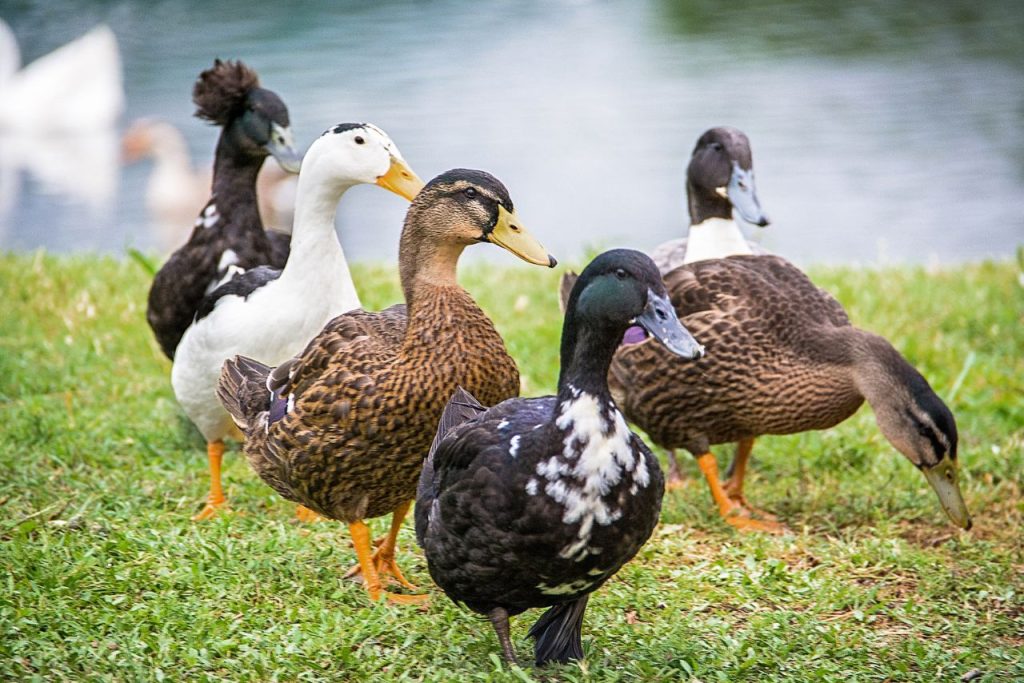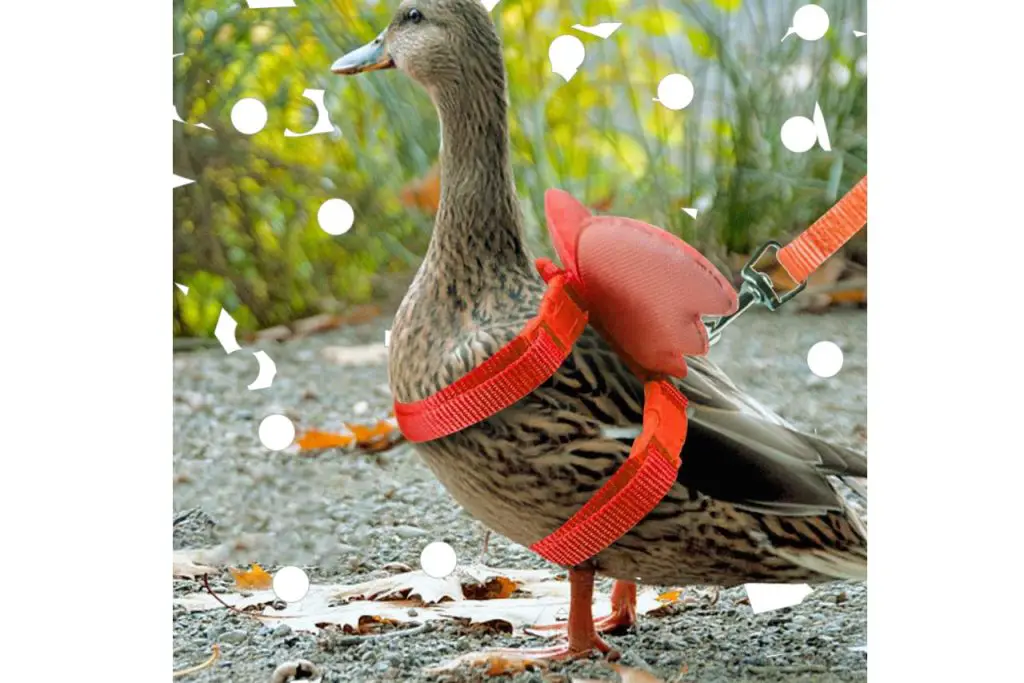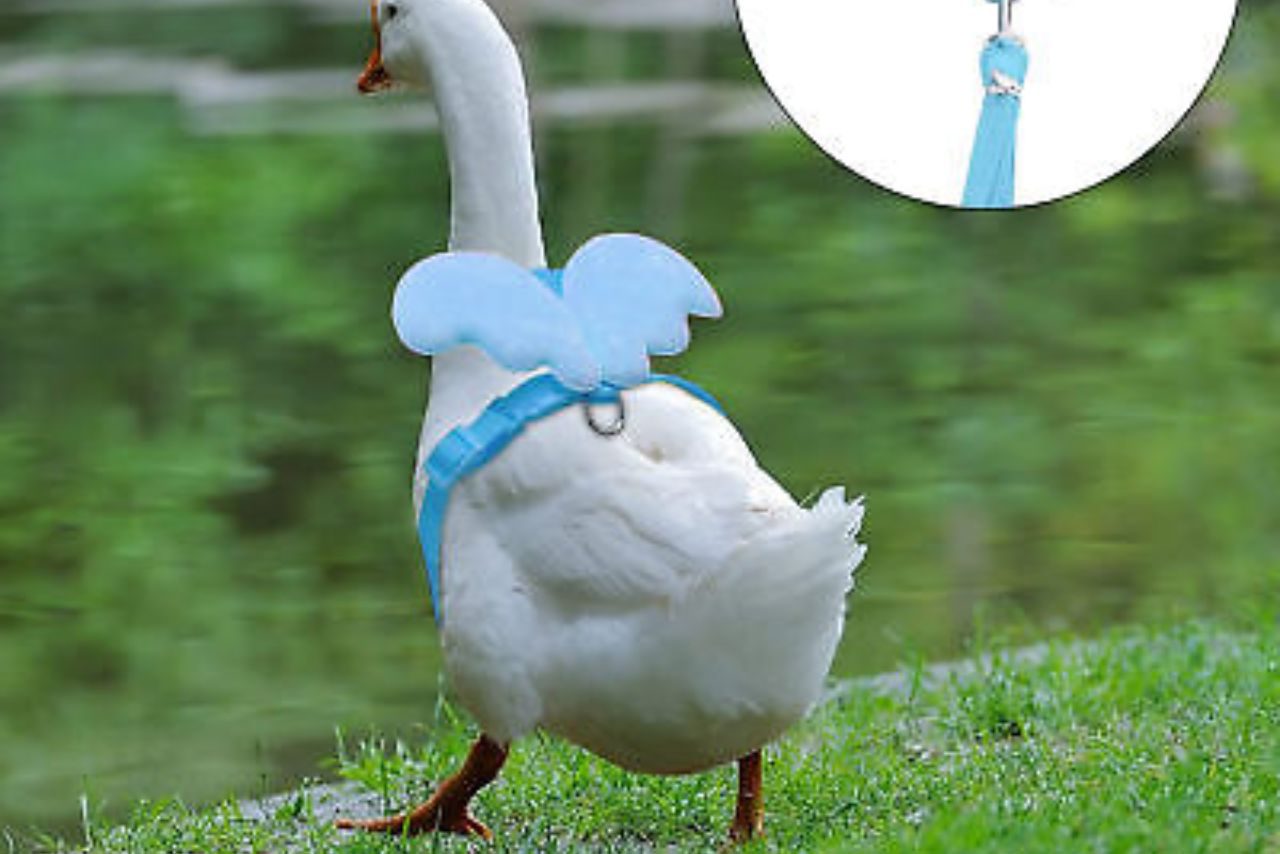To train a duck is a good thing for ducks. Ducks are facinating creature on the world. People are wonder about How to Train a Duck to Walk on a Leash?
So, Answer is very simple as , For training ducks Choose the right harness and leash, Introduce the harness and leash to your duck gradually, Start by walking your duck in a safe and familiar area, Use positive reinforcement, Be patient overall.
With patience and consistency, you can train your duck to walk on a leash. This can be a fun and rewarding experience for both of you.
Always prioritize the comfort and safety of your pet duck when selecting their walking equipment! By investing in the right type of leash, you’ll be setting yourself up for successful training sessions.
When it comes to training your duck to walk on a leash, selecting the right leash is essential. In this blog post we will explore this question with different ways for training ducks on leash.
How to Train a Duck to Walk on a Leash?
Leash training is the process of teaching your ducks to walk calmly and close to you on a leash. It is an important skill for all ducks to learn, as it allows you to control your duck’s behavior and keep them safe.
Sure, here are the steps on how to train a duck to walk on a leash:
- Choose the right harness and leash. Make sure the harness is comfortable and fits your duck snugly but not too tightly. The leash should be long enough to give your duck some freedom to move around, but not so long that it can get tangled.
- Introduce the harness and leash to your duck gradually. Let them sniff the harness and leash and get used to the feeling of them. You can also put the harness on them for short periods of time at first, and then gradually increase the amount of time they wear it.
- Start by walking your duck in a safe and familiar area. Once they’re comfortable wearing the harness and leash, you can start taking them for short walks in a backyard or other enclosed area.
- Use positive reinforcement. When your duck walks with you, give them treats or praise. This will help them associate walking with positive experiences.
- Be patient. It may take some time for your duck to learn to walk on a leash. Be patient and consistent with your training, and eventually they’ll get the hang of it.
Key Factors for Choosing Leash:
Here are some key factors to consider when choosing a leash for your feathered friend:
- Material: Opt for a lightweight and durable material that is comfortable for your duck to wear. Nylon or cotton webbing leashes are commonly used and provide flexibility while being strong enough to handle any unexpected tugs.
- Length: The length of the leash should allow your duck enough freedom to explore without getting tangled or feeling restricted. A good starting point is a leash between 4-6 feet long, which provides adequate space while maintaining control.
- Attachment Method: Look for a leash with an easy-to-use attachment method that securely fastens around your duck’s body. Harnesses designed specifically for ducks often have adjustable straps and quick-release buckles, ensuring a snug fit while allowing you to remove the harness easily.
- Visibility: Consider choosing a brightly colored or reflective leash that enhances visibility during walks, especially if you plan on taking your duck out in low-light conditions or near busy roads. This will help ensure their safety and make them more visible to others.
- Weather Resistance: Ducks love water, so opt for a waterproof or water-resistant leash that can withstand their natural inclination towards puddles and ponds without becoming damaged or heavy when wet.
Preparing Duck for Leash Training

Here are a few steps to follow in order to prepare your duck for leash training:
- Establish trust: Spend quality time with your duck and establish a bond of trust. This will help them feel more at ease during the training sessions.
- Get them familiar with a harness: Introduce your duck to a harness gradually. Start by placing it near their feeding area or in their living space so they can get used to its presence.
- Positive reinforcement: Use positive reinforcement techniques such as treats or praise to reward your duck when they show interest in or approach the harness willingly.
- Handling practice: Gently handle your duck on a regular basis, touching their feet and wings, getting them accustomed to being touched all over their body just like they would experience while wearing a harness.
- Start with short sessions: Begin by putting the harness on your duck for short periods of time inside their living area before moving outside for walks on the leash.
- Gradual exposure: Once comfortable with wearing the harness indoors, slowly introduce outdoor environments while keeping an eye out for any signs of stress or discomfort from your duck.
- Practice walking indoors first: Before taking your duck outdoors on a leash, practice walking them indoors where there are fewer distractions until they become familiar with following you while wearing the harness.
| Command Description teach your duck to sit down calmly when instructed. | |
|---|---|
| Stay | Train them not to move until given permission. |
Practicing Walking with the Leash Indoors
Once your duck is comfortable wearing a harness, it’s time to start practicing walking with the leash indoors. Here are some steps you can follow:
- Choose a spacious room: Find a large, clutter-free area in your home where your duck can move around freely without any obstacles.
- Attach the leash: Securely attach the leash to your duck’s harness, making sure it is not too tight or too loose. Ensure that there is enough slack for your duck to walk comfortably.
- Encourage movement: Gently encourage your duck to move forward by using treats as motivation. Hold a treat slightly ahead of them so they have something to focus on and follow.
- Start slow: Begin by taking small steps together, allowing your duck to adjust to walking while attached to the leash. Reward them with treats and praise each time they take successful steps.
- Practice control: As you progress, introduce simple commands such as “stop” or “come” during your indoor walks with the leash on. Use positive reinforcement techniques like treats and verbal cues when they respond correctly.
- Increase duration: Gradually increase the duration of these indoor practice sessions over time, aiming for at least 10-15 minutes per session once your duck becomes more comfortable with walking on a leash.
- Observe behavior: Pay close attention to how your duck reacts during these training sessions indoors; if they seem stressed or uncomfortable, take breaks and try again later when they’re more relaxed.
Gradually Transitioning to Outdoor Walks

When you feel that your duck is comfortable walking indoors with a leash, it’s time to start transitioning to outdoor walks. Here are some steps to follow:
- Choose a safe and quiet environment: Find an area outdoors that is free from potential hazards like busy roads or aggressive animals. A calm park or backyard can be ideal for the initial outdoor sessions.
- Start with short outings: Begin by taking your duck outside for short periods of time, gradually increasing the duration as they become more accustomed to the surroundings.
- Use positive reinforcement: Reward your duck with treats and praise whenever they walk calmly on the leash outdoors. This will help reinforce good behavior and make them associate outdoor walks with positive experiences.
- Monitor their comfort level: Pay attention to any signs of discomfort or stress in your duck during outdoor walks. If they seem anxious or reluctant, take a step back and continue practicing indoors until they feel more at ease.
- Introduce new environments slowly: Once your duck becomes comfortable in one location, gradually introduce them to different environments such as parks or waterfront areas. Provide plenty of reassurance and rewards throughout each outing.
- Practice recall commands: It’s important to train your duck on recall commands so that you can call them back if needed during an outdoor walk. Start practicing these commands in a controlled environment before testing them outdoors.
- Stay consistent and patient: Remember that training takes time and consistency is key! Be patient with your feathered friend as they adjust to walking on a leash outdoors.
Troubleshooting Common Challenges
When training a duck to walk on a leash, you may encounter some common challenges along the way. Here are some tips to help you troubleshoot and overcome these obstacles:
Fear or Resistance
- Gradual Introduction: If your duck shows fear or resistance towards the leash, start by introducing it slowly. Allow your duck to explore and get comfortable with the leash in its environment before attempting to put it on.
- Positive Reinforcement: Use treats and praise to reward your duck for positive behavior during leash training. This will help create a positive association with the leash and encourage cooperation.
Pulling or Straining
- Loose Leash Technique: Teach your duck not to pull by using the loose leash technique. Hold the leash loosely and stop walking whenever your duck pulls ahead. Resume walking only when there is no tension on the leash.
Distractions
- Controlled Environment: Begin training in an area with minimal distractions, such as a quiet backyard or an enclosed space indoors. As your duck becomes more comfortable, gradually introduce new environments with increased distractions.
- Focus Exercises: Practice focus exercises with your duck during training sessions to improve their ability to ignore distractions while on a walk.
Lack of Interest
- Variety of Rewards: Experiment with different types of rewards (such as treats, verbal praise, or playtime) to find what motivates your individual duck.
- Short Training Sessions: Keep training sessions short and engaging so that they hold your duck’s interest throughout.
Walking at Different Paces
- Consistent Pace Cue: Teach your ducks cues for different paces such as “slow,” “steady,” or “faster.” With practice, they will learn how to adjust their pace accordingly.
Watch Video: How to Train a Duck to Walk on a Leash?
Conclusion! How to Train a Duck to Walk on a Leash?
Training a duck to walk on a leash can be a rewarding experience for both the owner and the duck.
By following the right steps and using positive reinforcement techniques, you can successfully teach your feathered friend to walk alongside you with confidence.
Consistency is key when it comes to training. Start by introducing your duck to the leash gradually and reward them for their progress.
Be patient and understanding as it may take some time for your duck to get used to this new experience.
With practice and repetition, your duck will eventually become comfortable walking on a leash.
FAQs
Can Ducks Be Trained to Walk on A Leash?
Yes, ducks can be trained to walk on a leash. With patience, consistency, and positive reinforcement, ducks can learn to walk on a leash just like other animals.
How Do I Choose the Right Leash for My Duck?
Select a lightweight leash made from a strong material like nylon or cotton.
How Do I Introduce the Leash to My Duck?
Start by familiarizing your duck with the leash by allowing it to sniff and inspect it. Once your duck feels comfortable, gently attach the leash to its harness or collar and let it walk around with the leash dragging behind.
How Do I Train My Duck to Walk on A Leash?
Begin by walking your duck in a familiar, secure, and quiet area. Use treats and positive reinforcement to encourage the duck to follow you while on the leash.
Start with short walks and gradually increase the duration and distance over time. Consistency and patience are key during the training process.
Should I Use a Harness or A Collar for My Duck?
Using a harness is generally recommended for ducks as it provides more security and comfort. Collars can be easily slipped off by ducks, especially if they get startled or scared.
How Long Does It Take to Train a Duck to Walk on A Leash?
The time it takes to train a duck to walk on a leash can vary depending on the individual duck’s personality and previous experiences. Some ducks may learn quickly within a few weeks, while others may take longer.
Can Ducks Be Trained to Walk on A Leash?
While most duck breeds can be trained to walk on a leash, some breeds may be more stubborn or independent. It is recommended to start with breeds known for their calm and laid-back nature, such as Pekin ducks or Call ducks.
Are There Any Safety Precautions I Should Take While Walking My Duck on A Leash?
Always supervise your duck when it’s on a leash and avoid exposing it to potential hazards like busy roads or areas with predators.
Can Ducks Enjoy Walking on A Leash?
Many ducks enjoy the experience of walking on a leash as it provides mental and physical stimulation.




